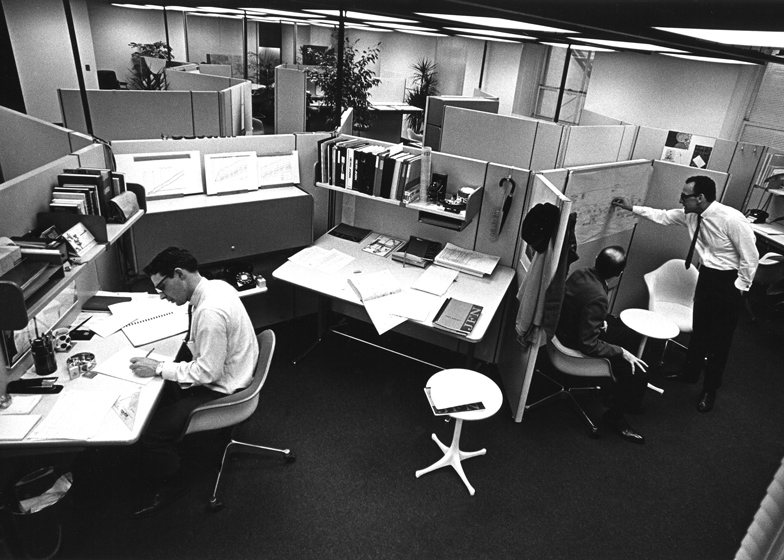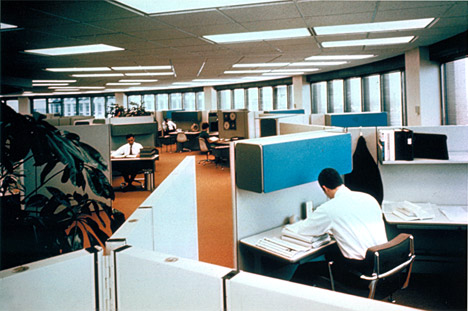
Herman Miller
Furniture design trends respond to the zeitgeist…and what’s a bigger part of the zeitgeist than the way we work? While open plan office design has dominated workplaces for the past few decades, the once maligned cubicle has recently been experiencing a resurgence of popularity.
Formerly symbolic of a dehumanised corporate landscape, cubicles have found new favour with a post-pandemic workforce looking for comfort and self-expression on their return to the office.
‘The Great Shift’ to hybrid working amplified a trend that was already underway, with workers increasingly valuing quiet, private spaces in the office as well as at home. The new paradigm is about creating cohesion privacy, connection and creativity.
Reconfiguring the Workplace for Success
According to a report from Business Research Insights, a market research firm, re-engagement with the design has propelled the global cubicle market to a staggering $6.3 billion, projected to reach $8.3 billion in the next five years.
Recognising the need for privacy in addition to collaboration, employers are blending cubicles or semi-private areas with collaborative zones.
Reflecting the Way People Actually Work
Contemporary cubicle designs prioritise functionality and ergonomics, offering adjustable features, sound-masking capabilities, and integrated technology solutions to enhance productivity and comfort.
Perhaps one of the most impactful examples of cubicle design – one which continues to have an impact on aesthetics – is the ‘Action Office System‘ designed by Robert Propst for Herman Miller in 1968. Effectively the world’s fist open-plan office system, it was a bold departure at the time. Designed to fit the way people really worked, the components can be reconfigured to reflect shifting requirements.

The original Action Office System by Herman Miller, here and colour image above article. Images: Dezeen. A contemporary version is above. Image: Herman Miller.
Rather than fixed, high walls, the Action Office System still allows collaboration while giving workers a layer of privacy. This more accurately reflects the way people work than extremes of either private offices or open plan.
Bringing Individualism into the Workplace
Individualistic aesthetics are also permeating offices, with employees adding personal touches to their cubicles to create cosy havens of self-expression. Human beings are creatures of habit and employers are realising that most workers don’t want to ‘hotel’ or ‘hot desk’ workspaces. They want to create their own nook where they feel at home.
Manufacturers are acknowledging the influence of residential design on office furniture, and some employees are importing home décor into their work spaces.
We love this example below! A logistics analyst at Simple Modern in Oklahoma City transformed his cubicle into a faux wood cabin.

Image: New York Times
It was such a hit with his colleagues that the CEO of Simple Modern gave everyone in the office a $250 allowance—about the amount that Mundt estimated that he spent—to redecorate their cubicles in their own personal style.
As companies navigate the evolving landscape of combining remote work and in-office dynamics, the resurgence of cubicles underscores a broader shift towards flexibility and employee-centric design principles in modern workplaces.
If you’re an interior designer or architect for commercial office fit-outs, or a design trade professional in any area, you don’t want to miss Decor + Design & The Australian International Furniture Fair (AIFF), 17 – 19 July at Melbourne Exhibition Centre.
With 200+ exhibitors showcasing the latest in office furniture, indoor and outdoor furniture, art, lighting, textiles and more, this is the most important annual buying and networking event for the Australian industry.
Subscribe now to receive updates on the show and trade visitor registration!
